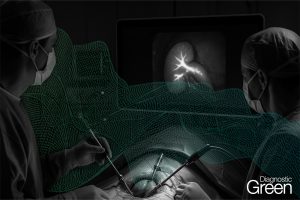Laparoscopic hepatectomy is an important treatment method for liver cancer. In the past, the resection boundary was usually determined by intraoperative ultrasound, important vascular structures, and surgeon experience. With the development of anatomical hepatectomy, visual surgery technology has gradually been applied to this type of surgery, particularly indocyanine green (ICG)-guided anatomical hepatectomy. As ICG can be specifically ingested by hepatocytes and used for fluorescence tracing, negative staining techniques have been applied according to different tumor positions.
Under ICG fluorescent guidance, the surface boundary and deep resection plane can be more accurately displayed during liver resection. Thus, the tumor-bearing liver segment can be anatomically removed, which helps to avoid damage to important vessels and reduce ischemia or congestion of the remaining liver tissue.
Finally, the incidence of postoperative biliary fistula and liver dysfunction is reduced; therefore, a better prognosis is obtained after the resection of liver cancer. Centrally located liver cancer is usually defined as a tumor located at segments 4, 5, or 8 that requires resection of the middle section of the liver. These are among the most difficult hepatectomies to perform because of the large surgical wounds and multiple vessel transections. Based on the specific tumor location, we formulated the required resection ranges by designing personalized fluorescent staining strategies. By completing anatomical resection based on the portal territory, this work aims to achieve the best therapeutic effect.




